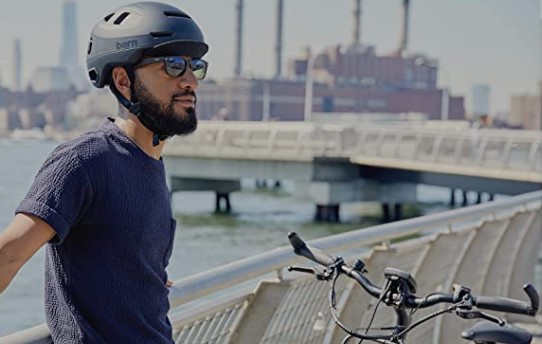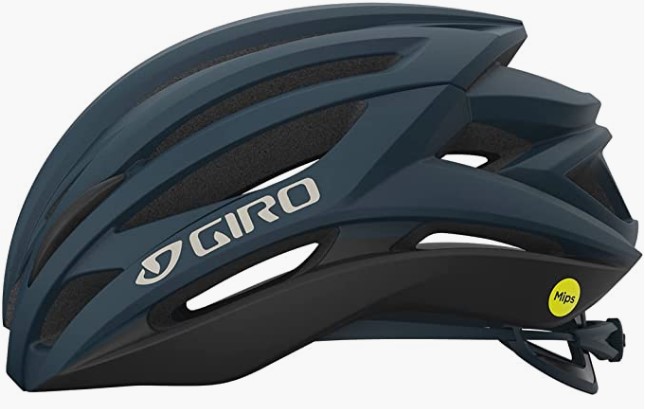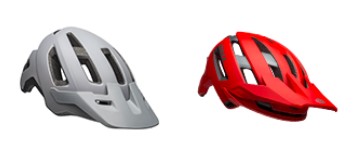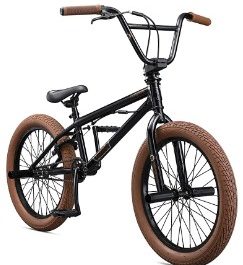Nowadays, helmet manufacturers employ Brain Protection System (BPS) during construction, the leading being MIPS and WaveCel technologies. But who wins the MIPS vs WaveCel helmet battle?
The MIPS technology protects your brain tissues from injury resulting from the rotational force in angled impacts. On the other hand, WaveCel technology is intended to reduce both rotational and linear forces during impact.
Generally, a bike helmet with either MIPS or WaveCel system gives you a better chance at head and brain injury prevention than none.
Having said that, research done under the Legacy Research Institute In Portland, Oregon, stated that WaveCel helmets were “more effective than MIPS.” However, this could be just controversial, seeing that the inventor of the WaveCel technology system led the study.
In this article, I will give an unbiased review of both MIPS and WaveCel, giving details of what kind of protection each system provides and its downsides.

In a hurry? Here’s a brief visualization of both MIPS and WaveCel helmets.
MIPS Vs WaveCel Helmets Comparison
| Comparison Factor | MIPS | WaveCel |
| Definition | Multi-Directional Impact Protective System | Collapsible Cellular Structure |
| Technology | Slip-plane technology | Collapsible cell layer |
| Effectiveness | Reduces linear forces | Reduces linear and rotational forces |
| Safety | 10% safer than non-MIPS helmets | 48 times safer than non-WaveCel helmets |
| Ventilation | Well-ventilated | Poor ventilation |
| Weight | Adds 25-45g to the helmet | Adds 50g to the helmet |
| Product Range | Available in a variety of bike helmet brands | Only in Bontrager helmets |
| Cost Range | Cheaper than WaveCel helmets | Pricier than MIPS |
MIPS Vs WaveCel Helmet Differences
Now let’s dive in at these two helmets based on technology, design, ventilation, protection, effectiveness, and range.
1. Technology
MIPS
MIPS protects against rotational motion during an angled impact. Its slip-plane helmet technology allows it to rotate independently around the head as it absorbs the energy released.
WAVECEL
WaveCel technology reduces risk to the brain and its tissues by absorbing shock. The material reduces initial friction during a crash, absorbs the force from impact, then redirects the energy away from your head.
2. Working Mechanism
MIPS
MIPS helmets provide a low friction layer between the head and helmet. That leaves about 10-15mm for the helmet to rotate around the head without causing any effect on the brain during an angled impact.
WAVECEL
WaveCel helmets consist of an outer impact zone, which functions like a crump zone or a car bumper, and protects the head and brain by:
- Flexing, and hence reducing initial frictional force.
- It crumples, reducing impact force.
- It redirects the energy away before it gets to the head and brain by grinding.
3. Helmet Effectiveness
MIPS
Injuries to the head could be more fatal than any other injuries. Strain to the brain in the event of a crash causes vibration to brain tissues, resulting in shear and stretch.
MIPS is designed to protect from rotational motion during angled impacts, which most cyclists experience. By offering an up to 10% force reduction to the brain, MIPS proves to be way more effective than ordinary bike helmets.
WAVECEL
This helmet has been proven to be almost 50 times more effective compared to traditional helmets. This is because WaveCel protects your head in three dimensions; top, sides, front, and rear.
To protect you from linear and rotational forces, WaveCel comprises an outer and an inner layer. The outer layer is purposed to absorb impact force, and the inner layer redirects the energy away.
The fact that it offers protection from different angles makes a WaveCel helmet very effective.
4. MIPS vs WaveCel Safety
MIPS
Before approval, MIPS helmets are put through a series of tests and dropped at an angle to provide angled impact.
Research by the Virginia Tech Safety System proved that MIPS helmets were safer at protecting against injury from an angled impact.
One of the safest MIPS helmets is the Giro Syntax MIPS Adult Road Cycling Helmet (Check on Amazon).
WAVECEL
The Virginia Tech Safety System has approved WaveCel as safe for use. However, as we reviewed under “helmet effectiveness,” WaveCel helmets are safer when protecting against linear and rotational forces.

5. Ventilation
MIPS
MIPS helmets have wide ventilation gaps at the top, front, and rear without compromising the helmet’s structural integrity. This ensures sufficient airflow in the head, especially when cycling under the sun.
WAVECEL
Unfortunately, WaveCel helmets contain no vents at the front. Though there are vents at the top and rear sides, they are blocked by the structural design of the inner cell layer.
6. Weight
MIPS
When weighed against an ordinary helmet, a helmet with MIPS technology weighs more by about 25-45g.
WAVECEL
When a WaveCel helmet is weighed against a similar helmet without WaveCel technology, research shows that a WaveCel helmet is heavier by about 50g.
7. Product Range
MIPS vs WAVECEL
There are a variety of both MIPS and WaveCel helmets. These range from mountain bike helmets, road helmets, recreational helmets, and commuter helmets to youths’ and kids’ helmets.
Some of the best MIPS helmets in the market are:
- Bell Super Air MIPS Mountain Bike Helmet: Best for Mountain Biking
- Giro Syntax MIPS Road Bike Helmet: Best for Road Biking
- Bern Hudson Commuter Helmet: Best for Commuter Bikes
8. Price
MIPS
Compared to ordinary helmets, MIPS helmets are more expensive because of the technology employed. The average cost of a MIPS helmet stands at about $150.
WAVECEL
WaveCel employs a more advanced technology than MIPS, which protects from linear and rotational motions. It’s no wonder a WaveCel helmet is more expensive than a MIPS helmet.
The average price of a WaveCel helmet is about $250, creating a $100 margin between it and MIPS.

WaveCel vs MIPS Helmet Pros and Cons
| Helmet Type | Advantages | Disadvantages |
| MIPS | Protects against rotational motion More pocket friendly than WaveCel Virginia Tech Safety Rating System certified Very well ventilated Available in a wide range of bike helmet brands | It doesn’t offer protection against the linear motion It can be less comfortable compared to WaveCel |
| WAVECEL | Protect against both linear and rotational forces Virginia Tech Safety Rating System certified They are sturdy, hence more comfortable than MIPS | They are more expensive than MIPSPoor ventilation system Only available on Bontrager WaveCel helmets |
MIPS vs. Normal Helmet – Is There Much Difference?
Yes. No helmet can indeed provide 100% protection.
However, a regular helmet is designed to protect one from direct injury to the head that may result in fracture, while a helmet with MIPS has been equipped with a Brain Protection System to protect your brain from injury.
Research shows that MIPS provides 10% better protection than an ordinary helmet.
Frequently Asked Questions
1. What Is WaveCel Technology?
WaveCel technology is a form of Brain Protection System that reduces risk to the brain by preventing both linear and rotational motions. This cellular structure is installed inside the helmet and helps reduce initial frictional and impact forces while redirecting energy away from your head and brain.
2. How Long Do WaveCel Helmets Last?
Just like ordinary helmets, a WaveCel helmet should be replaced after 3-5 years since the cell layer efficiency degrades over time. But in the event of a crash, it is recommended that you replace the helmet immediately.
3. Do MIPS Helmets Make a Difference?
Yes. Research shows that MIPS helmets offer 10% more protection than regular bike helmets. The technology is precisely employed to help protect your brain from crash injuries.
4. Do WaveCel Helmets Work?
Yes. No helmet guarantees 100% protection from injury. However, the technology in WaveCel helmets protects you from linear and rotational impact 48 times better than a regular helmet.
5. Which Is Safer-WaveCel or MIPS?
Both helmet technologies are safe. WaveCel technology helps absorb linear impact force and rotational motion, whereas MIPS technology only protects from rotational movement.
Therefore, it all comes down to your preference. The MIPS helmet is safer and more effective if you want protection from rotational motion. If you want to protect your head from linear impact forces, a WaveCel helmet is safer.
6. Are MIPS Helmets Better?
MIPS helmets protect the brain tissues from shear and stretch during impact. So, compared to non-MIPS helmets, a MIPS helmet is better as it helps absorb the impact force by over 10%.
MIPS vs WaveCel helmet Concluding Thoughts:
As established in this article, both helmets are effective, depending on what kind of protection you are looking for, since each employs a Brain Protection System.
For protection against rotational motion, MIPS is your go-to helmet. If you want protection from linear forces, then a WaveCel helmet is better suited.
I hope that this article helps you in making your pick!
Relevant:

